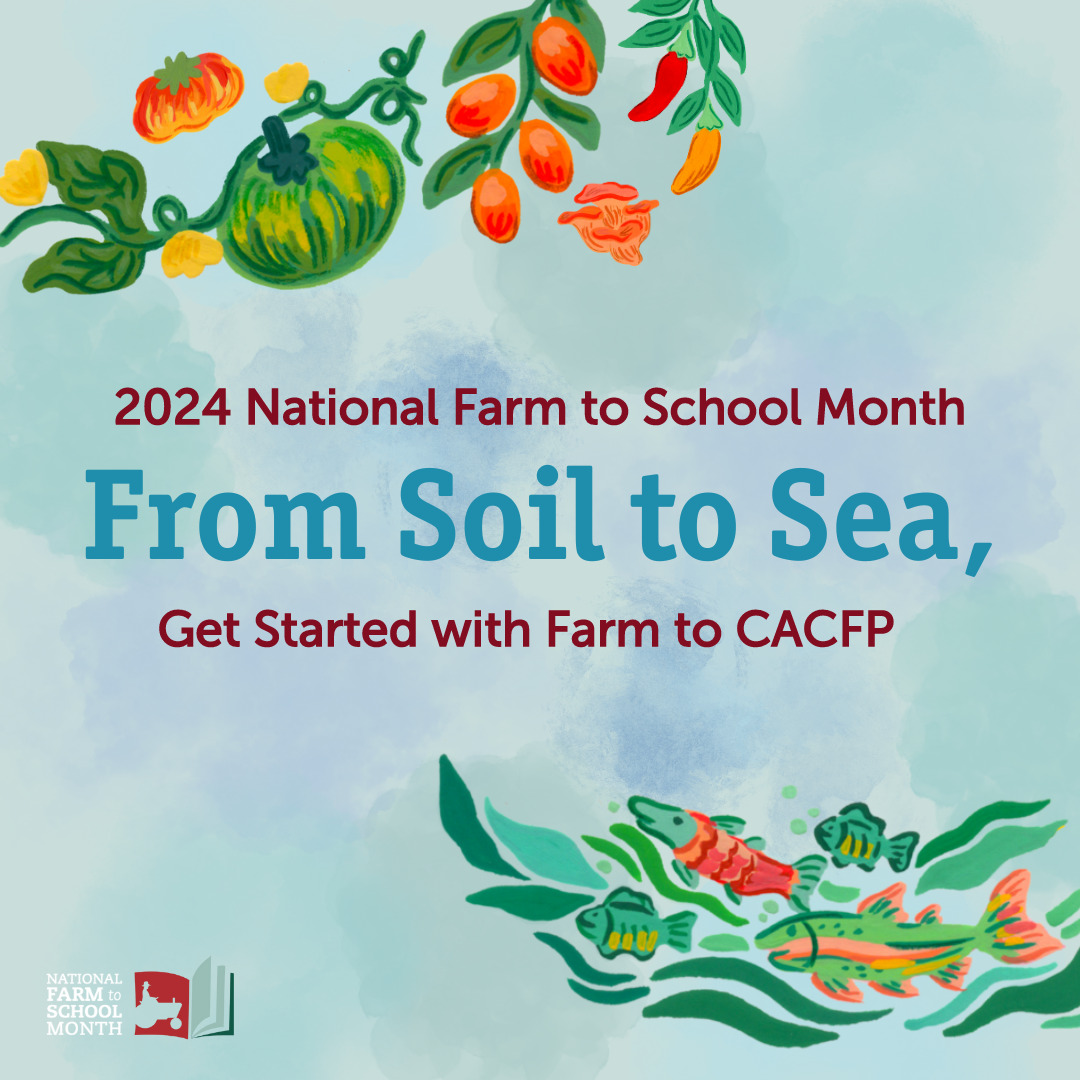Celebrate Farm to CACFP
National Farm to School Network
October 1, 2024

October is National Farm to School Month, but it’s not just for schools. This is a time to celebrate the connections happening all over the country between children and local food in many different settings, including in the CACFP. From taste tests and nutrition education activities, to farm visits and garden harvest parties —schools, early care and education (ECE) sites, farms, communities and organizations in all 50 states, Washington, D.C. and U.S. Territories join in the celebrations. Our partners at the National Farm to School Network (NFSN) have a Celebration Toolkit & resource to help you participate in farm to ECE activities.
Why Farm to School/ECE?
Farm to school is a triple win for kids, farmers and communities.
KIDS WIN Farm to school provides all kids access to nutritious, high-quality, local food so they are ready to learn and grow. Farm to school activities enhance classroom education through hands-on learning related to food, health, agriculture and nutrition.
FARMERS WIN Farm to school/ECE can serve as a significant financial opportunity for farmers, fishers, ranchers, food processors and food manufacturers by opening doors to an institutional market worth billions of dollars.
COMMUNITIES WIN Farm to school/ECE benefits everyone from students, teachers and administrators to parents and farmers, providing opportunities to build family and community engagement. Buying from local producers creates new jobs and strengthens the local economy.
Ways to Celebrate
Early Care and Education (ECE) Sites
- Serve local food for a healthy snack. Make a CACFP reimbursable snack by combining two local food components, like apples from your local farmer and yogurt from your local dairy.
- Start a harvest of the month program in your classroom. Check out NFSN’s ECE Resources Directory to get started.
- Read a new book that celebrates your students’ cultures and backgrounds—this list of Children’s Books About Diversity and Food is a great place to start!
- Visit a farm, orchard or pumpkin patch with your students. If you can’t get to the farm, ask the farmer to come to your classroom for a visit.
- Plant seeds and watch them grow!
- Sing the plants part song with your students (to the tune of Head, Shoulders, Knees, and Toes): “Roots, Stem, Leaves and Flowers, Leaves and Flowers (Repeat) / Flowers grow to Fruits then drop their Seeds / Root, Stem, Leaves and Flowers, Leaves and Flowers.”
- Invite parents to a Farm to School Month feast, highlighting local foods and recipes and farm to school themed artwork created by the children.
- Use a pumpkin or squash to highlight math concepts by measuring its weight, height and circumference and counting the seeds inside.
- Ask children and families to share their family food traditions and favorite recipes to create a class cookbook.
Out of School & Afterschool Providers
- Introduce new foods and healthy recipes during snack time. Better yet, invite students to help you prepare the snack and learn food prep skills.
- Use arts and crafts such as coloring, painting, cutting and pasting or other creative projects to reinforce excitement for fruits and vegetables. You can download NFSN’s free Farm to School Month coloring page at farmtoschoolmonth.org.
- Read books together about food, nutrition or agriculture. Check your school or local library to see what’s available.
- Get moving with physical activity games. Try a relay race to collect fruits and vegetables and sort them by color.
- Role model for students by participating in healthy snack time and physical activity games.
Families
- Read a book about food, farming or cooking together. If you have young children, this list of Children’s Books About Diversity and Food is a great place to start!
- Whether it’s a container garden inside, a raised bed in the backyard, or a plot at a community garden, get out and garden as a family.
- Visit a farmers’ market or locally owned co-op. Many markets and grocery stores have double up food dollar programs for families who purchase local produce using SNAP.
- Visit a farm, orchard, or pumpkin patch. Invite neighbors to join you!
- Cook and enjoy a family meal together, incorporating local foods.
- Share family recipes. Have your child/grandchild copy down a family recipe or cook a meal that you enjoyed when you were their age.
- Talk with your child’s teachers, school administrator, or school food service staff about farm to school/ECE programs. Ask how you can be supportive.
Everyone
- Let teachers, paraeducators, food service workers, school groundskeepers, and administration know that you appreciate their dedication to farm to school programs as a way to support healthy kids, communities, and farmers.
- Participate in a school or community garden clean-up or planting day.
- Talk to your local and state representatives about how farm to school/ECE programs are a win for kids, farmers and families in your communities. Through advocacy and education, you help shape farm to school policy.
- Connect your local librarians to farm to school/ECE programming. Many local libraries have community gardens on their property or even just a single raised bed for story time. Urban libraries can consider vertical gardens or tower garden systems.
For more additional resources and celebration ideas, check out NFSN’s Celebration Toolkit & Resources.
